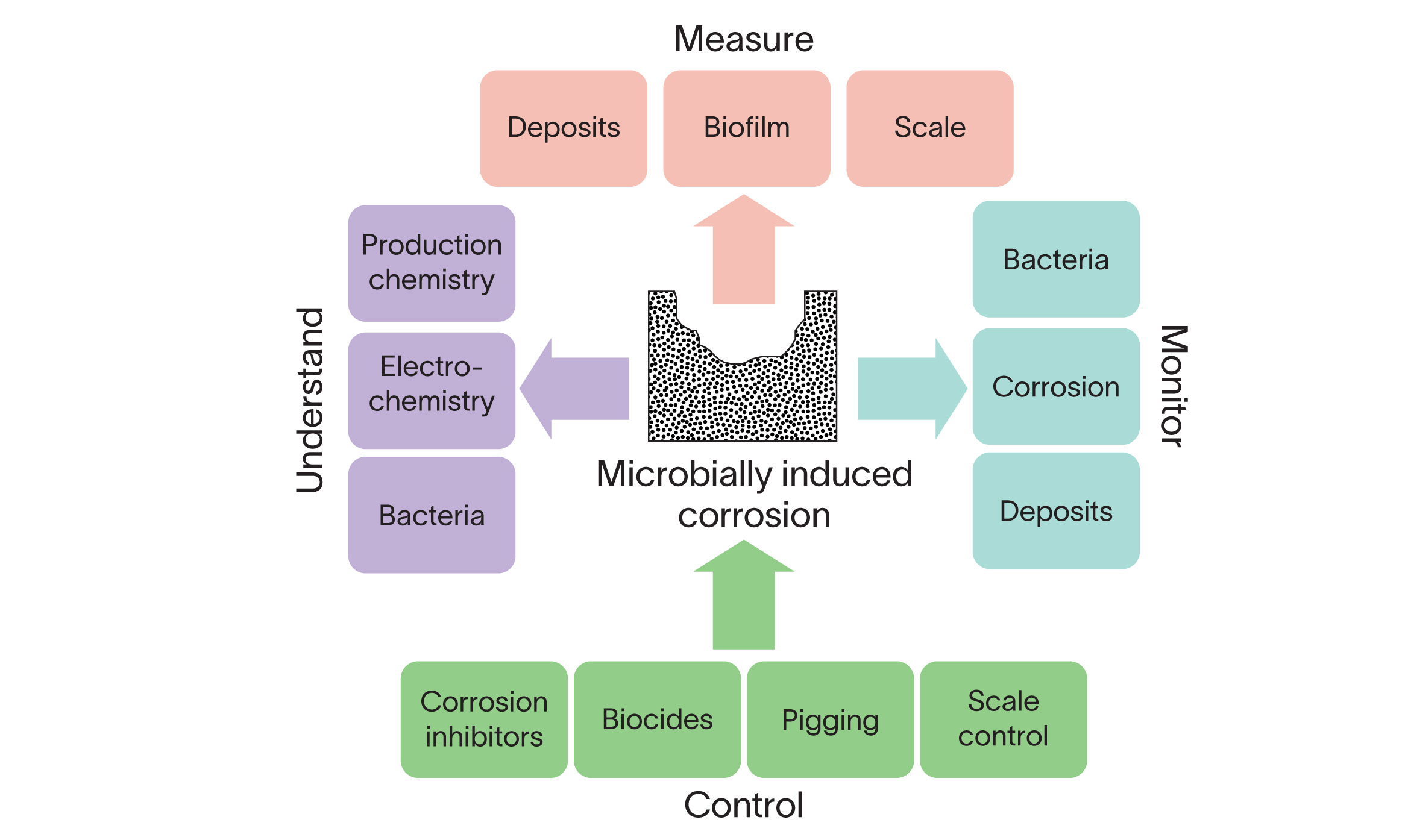Microbially induced corrosion management
Biocides and nitrate injection to prevent microbial corrosion of oil and gas production and pipeline integrity
Biocide selection
Biocides are chosen and applied to treat specific problems caused by bacteria. For example, they may be used to remedy or prevent reservoir souring, mitigate microbially induced corrosion, or prevent biofouling. To achieve its goal, the biocide must be applied at a location, in a concentration, and with sufficient contact time to enable the active ingredient to kill, disable, or control the bacterial population. It must be compatible with the system water chemistry and effective against the system biology.
Each biocide has a unique mode of action, chemical interaction, environmental persistence, and toxicity as well as regulatory compliance requirements that must be evaluated before application. This assessment enables selection of an appropriate product and its correct application to achieve the desired objective. We recommend using the most effective single biocide for each application and avoiding alternating biocides treatments, which are sometimes used in oil and gas fields.
Nitrate injection for H2S mitigation
Nitrate injection is used to reduce H2S production by changing formation bacteria populations. Long-term, continuous injection of controlled levels of nitrate causes an increase in nitrate-reducing bacteria (NRB), which outcompete and displace sulfate-reducing prokaryotes (SRP), decreasing H2S production.
The technology will generally increase the level of total living bacteria in the production system, and surface biocide is required to prevent microbially induced corrosion. The method requires a detailed knowledge of the formation—including formation modeling—to ensure effective treatment.
A holistic approach
Microbially induced corrosion caused by bacterial activity is estimated responsible for up to 40% of corrosion failures in oil and gas production. SLB uses a four-step integrated approach to detect, mitigate, and prevent this activity.
Understand
Each oil and gas production or water injection system is unique, and understanding its chemistry, biology, and operational parameters is key.
Measure
We provide a wide range of traditional and modern bacteria detection technologies, including genetic sequencing, adenosine triphosphate (ATP) detection, bacterial cultures, metabolism-based technologies, and the proprietary Microbial InstaCheck real-time bacteria measurement, monitoring, and control service. Because bacteria can grow under deposits, we also have the technology and expertise to detect and analyze biofilms, scale, and production deposits.
Monitor
Once bacteria and biofilms have been detected, it is important to monitor how they change over time.
Control
Application of fit-for-purpose production chemicals and regular system cleaning or pigging removes deposits and biofilms and reduces bacterial populations to acceptable levels.



